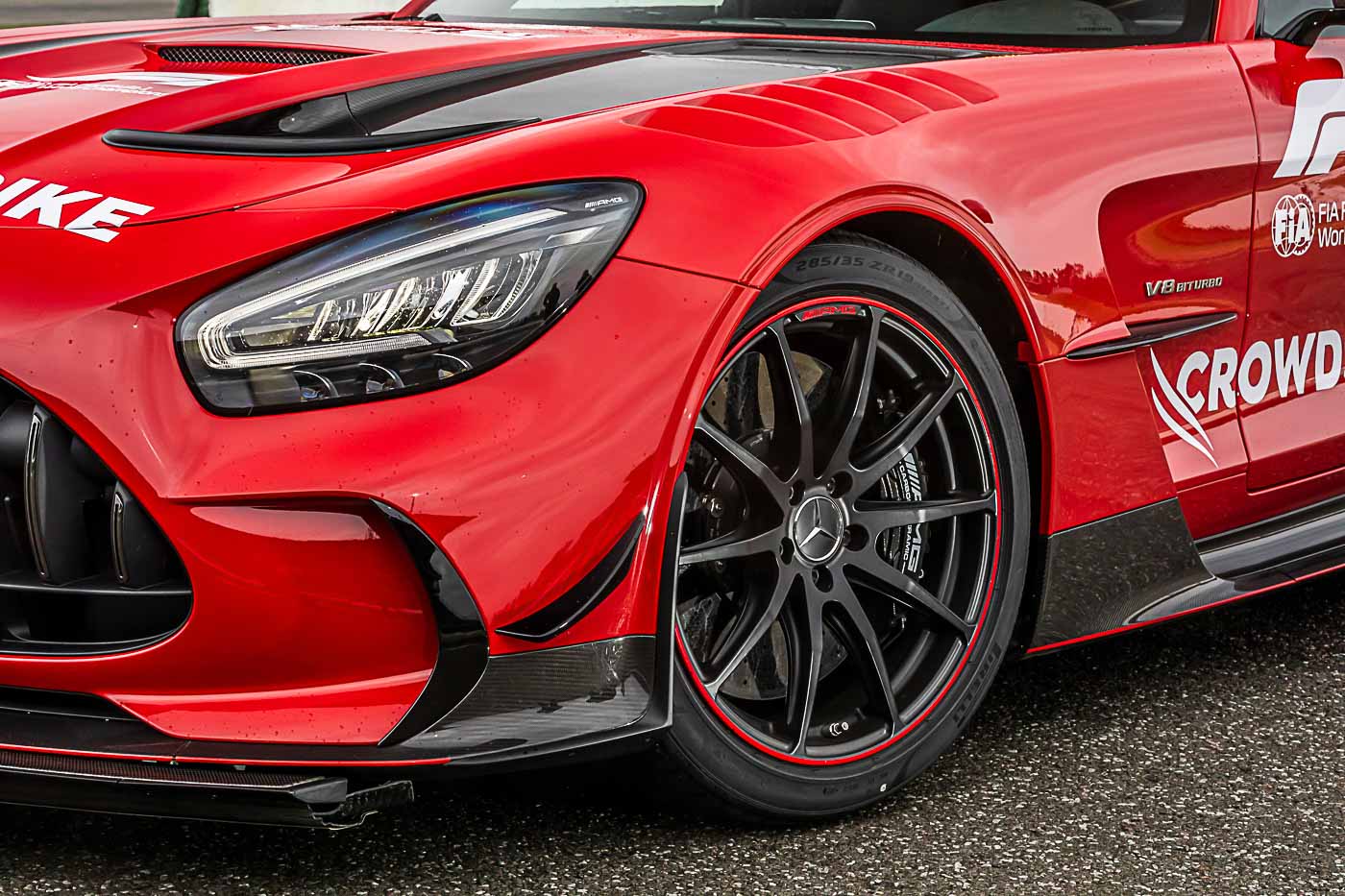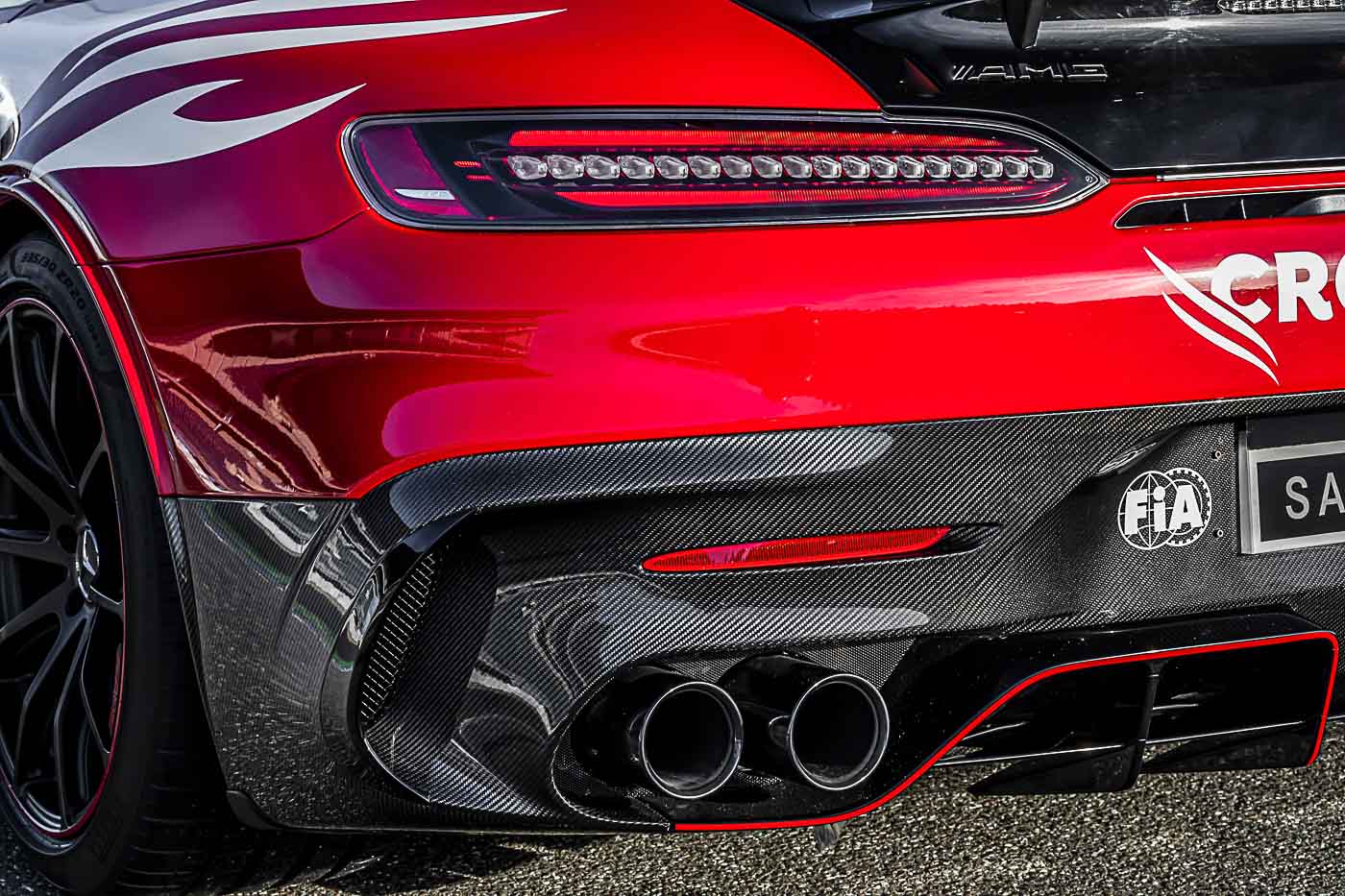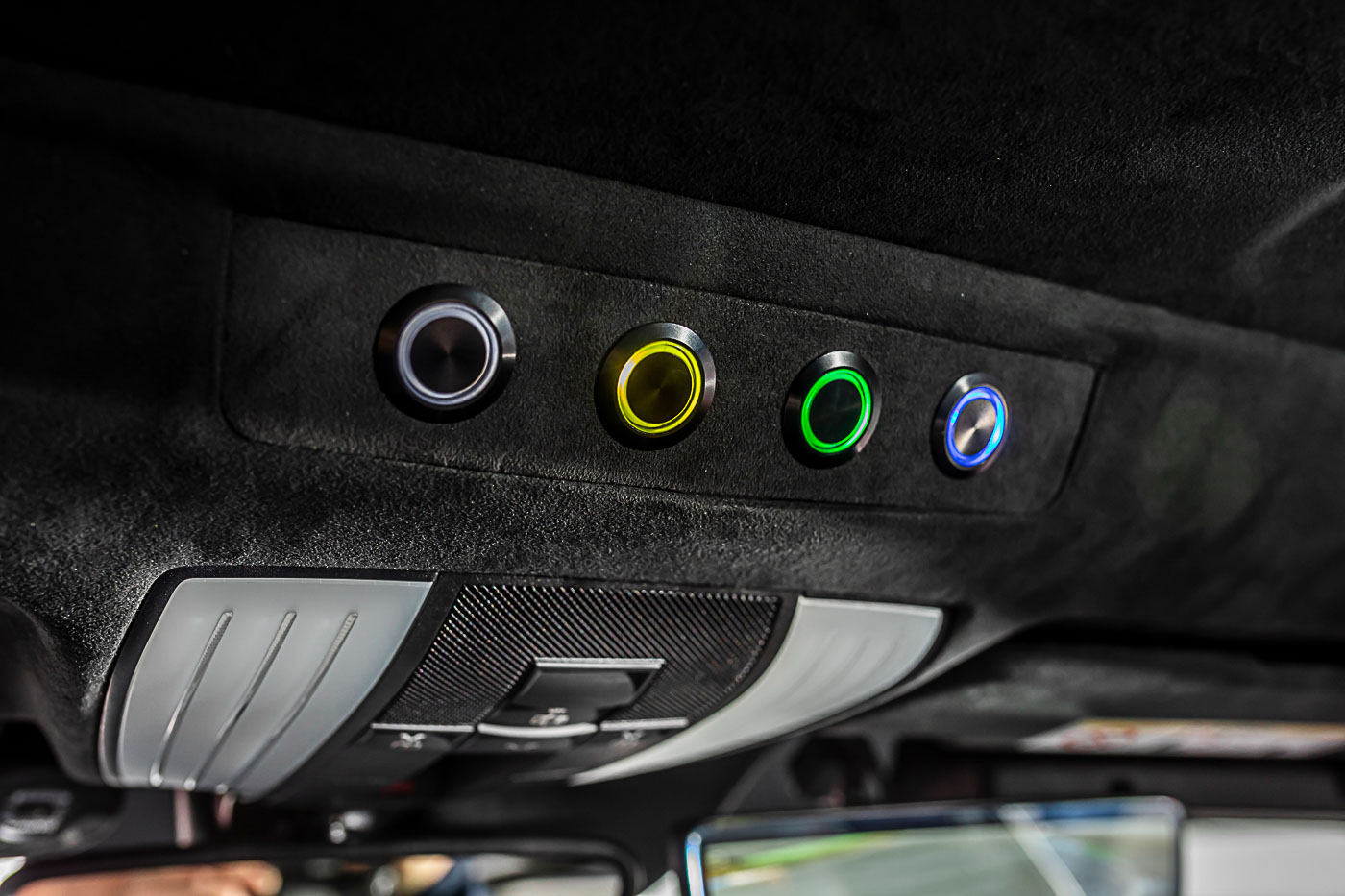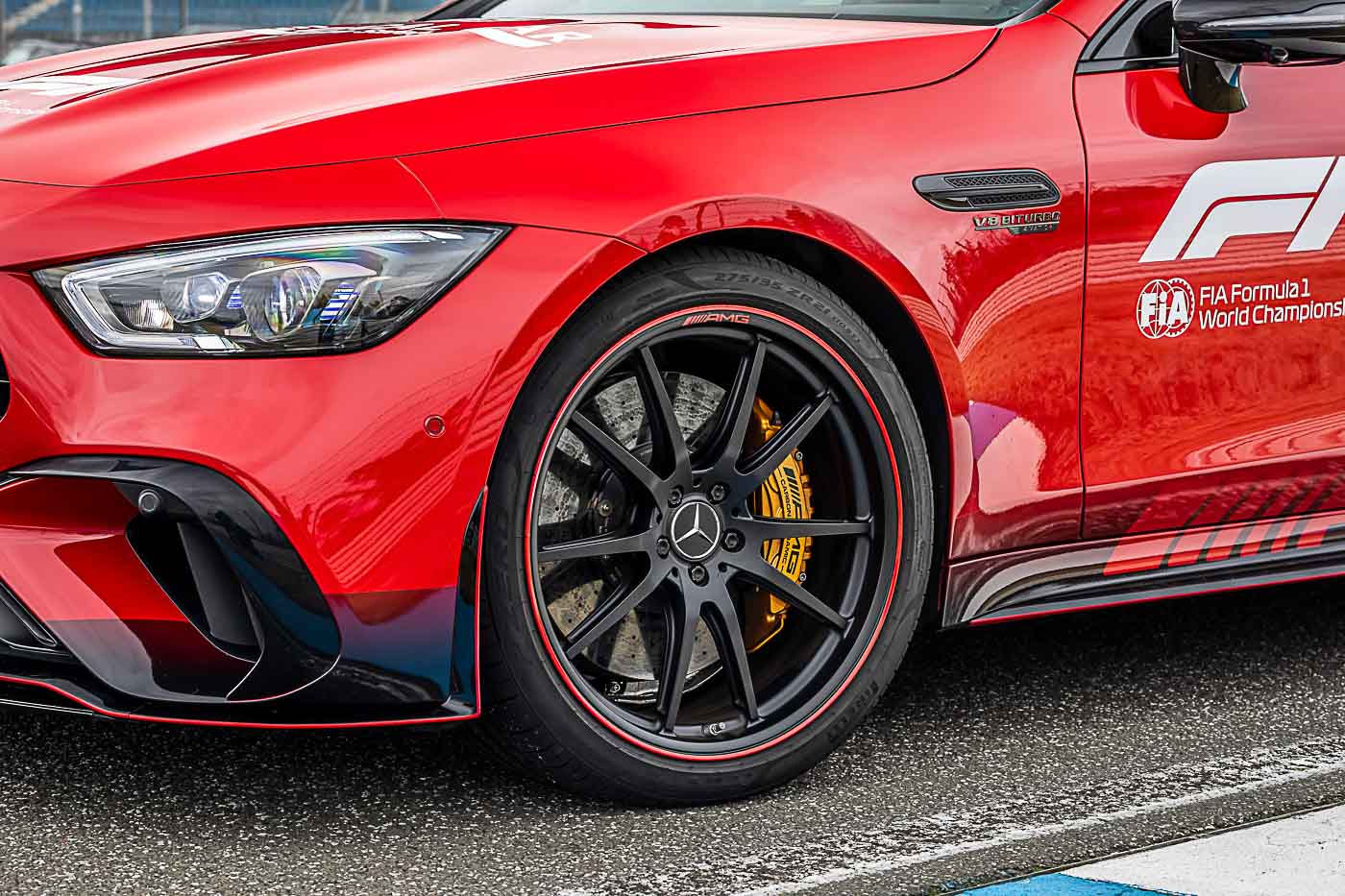For every single year since 1996, Mercedes-AMG has been supplying the FIA Formula 1 World Championship with Official F1 Safety Cars, and for the new 2022 season, kicking off with the Bahrain GP, the legacy continues.
Mechanically, both Safety and Medical cars are almost entirely standard. However, they have extensive equipment for their roles on the track. The most noticeable feature of the Official F1 Safety Car is the absence of the usual light bar on the roof, which would have interfered with the aerodynamic balance of the AMG GT Black Series.


Instead, development engineers in Affalterbach came up with something completely new. At the front, the LED light bar has been incorporated into the upper area of the windscreen, while the rearward-facing lights have been integrated into the rear spoiler.
In case you’re wondering, when the car flashes and orange lights, it means no overtaking. Green is usually flashed when the safety car is entering the track, and drivers are still allowed to overtake the safety car.

Two tiny video cameras are installed into the spoiler strut with the images displayed inside the car. One camera serves as an electronic rear-view mirror for the co-driver, while the other transmits a live TV stream.
The interior of the Official F1 Safety Car is similar to the standard AMG GT Black Series (equipped with Track Package) and comes fitted with a titanium roll cage and lightweight bucket seats. The system increases the AMG GT Black’s vehicle stiffness even further improving passive safety.

Also new are the six-point safety harnesses that are approved by the Fédération Internationale de l’Automobile (FIA) and two tablets in the centre console and instrument panel in front of the passenger seat. These enable the co-driver to monitor the Formula 1 field. The right monitor can display the current position of the race cars on the track or the current lap times.
For the Official F1 Safety Car, the suspension specialists at AMG have engineered a set-up with the Pirelli P Zero tyres that can adapt to any race track and weather condition. The AMG ceramic high-performance composite brakes are exactly the same as those in the regular AMG GT Black Series.

As for the Official F1 Medical Car, the Mercedes-AMG GT 63 S 4MATIC+ makes its Formula 1 debut, taking over from its predecessor, the C 63 S AMG Estate. The fastest and most powerful medical car to date is crewed by up to three medics, from a specialist clinic close to the respective racetrack.
The medical car differs from the standard production car largely due to the carbon fibre roof scoop designed to offer the lowest possible wind resistance. At the same time, it optimises the airflow towards the fixed rear wing. The layout and design of the carbon fibre scoop and the light bar were the results of extensive wind-tunnel testing.

Inside the spacious boot is the full set of emergency equipment, including a defibrillator, breathing apparatus, rescue cutter, and two handheld fire extinguishers.
Instead of the standard seats, the cabin of the AMG GT is occupied by four individual racing bucket seats, including six-point harnesses on the front seats and four-point harnesses in the rear. For maximum safety, the seat consoles are welded to the floor of the car.
All Formula 1 racing drivers wear special gloves equipped with sensors in the pinkie finger to monitor their vital signs. In an emergency, the paramedics in the medical car can receive real-time information in the car, informing them the current pulse rate or blood-oxygen level of the driver.
GALLERY









































